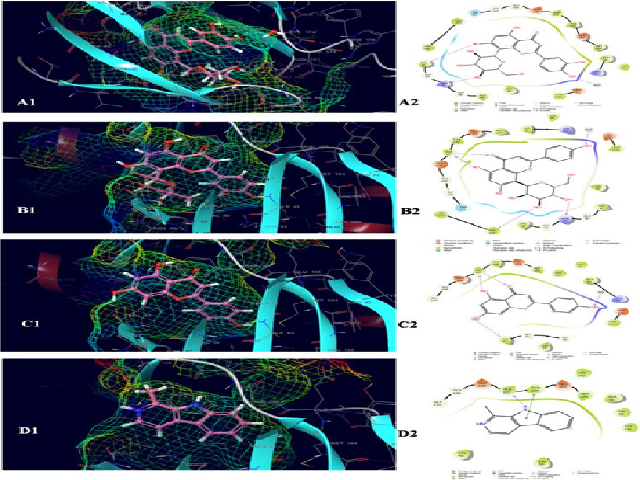In silico Molecular Docking and Scrutinizing Druglike Properties of Selected Phytoconstituents Against TAK1, Xanthin Oxidase, and IL-1 β Targets in Gouty Arthritis
DOI:
https://doi.org/10.5530/ctbp.2023.4.83Keywords:
Molecular docking, TAK1, IL-1 β, Phytoconstituents, Gout, Xanthin oxidaseAbstract
Common manifestation of gout is depo- sition of monosodium urate crystals in joints followed by cytokinine-induced inflammatory re- sponses. Xanthin Oxidase (PDB ID: 3NVY) and proinflammatory cytokinines, eg., TAK1 (PDB ID: 7NTH) and IL-1 β (PDB ID: 5R8Q) are vast- ly accountable for the severity of the disease. Inhibition of these targets with phytoconstitu- ents would be preferable option in the treatment of gout patients. In the present study, in silico molecular docking analysis of Orientin, Vitexin, Apigenin, and Harman were performed using Glide XP, Schrodinger 2017_2, with above drug targets to investigate docking score, binding free energies and druggability. The results re- vealed a docking score and binding energy in the range of -11.862 kcal/mol to -3.130 kcal/ mol and -53.282 kcal/mol to -32.346 kcal/mol respectively. Except Harman all the compounds have considerable docking score and binding energies, which typically indicate that they have the optimum interaction with the binding sites. ADME/T analysis performed using QikProp pro- gram of Schrödinger 2017-2 and the SwissAD- ME online server indicated that the Vitexin and Apigenin have the physiochemical properties to be developed as drugs. These studies can be used to develop alternate therapeutic options for the treatment of gout.



